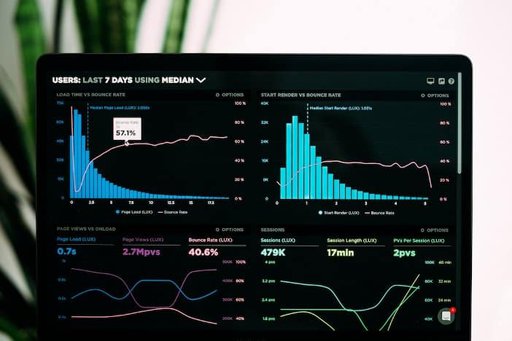In today’s data-centric society, visualizing large quantities of data can be a challenge. However, the use of specialized charts, such as the logarithmic chart, can assist in achieving this. Keep reading to discover the cognitive and mathematical theories behind logarithmic charts and how they can be beneficial in dealing with sizeable numerical data.
Table of Contents
Logarithmic Charts: An Overview
Have you ever come across a graph that represents an extensive range of quantities, where the difference between smaller values is clear? That was likely a logarithmic chart.
The defining feature of a logarithmic chart is its unique scale. Instead of using a linear scale, it employs a logarithmic scale, where each value is plotted according to its logarithm.
This scaling method significantly affects the way the data is visualized. It reduces the emphasis on extreme values and enables a precise representation of smaller values.
Logarithmic charts are especially practical in fields such as finance, physics, music, and earth science, where they deal with vast numerical ranges.
Understanding the Fundamental Principle of Logarithmic Scaling
The fundamental principle of logarithmic scaling lies in its mathematical concept based on the powers of a certain number. Logarithm converts multiplicative changes in a variable into additive changes.
This transformation provides a new perspective on data. Instead of seeing an intimidating gap between colossal figures and small ones, you see clear, manageable, and comparable data.
This feature makes it easy to visualize exponential growth or decline and measure the rate of the change rather than the absolute change.
As a result, using a logarithmic scale can reveal details and trends that would otherwise remain hidden on a linear scale chart.
Practical Applications of Logarithmic Charts in Various Fields

The real-world applications of logarithmic charts are abundant. One prevalent use is in financial markets to visualize the percentage change in stock prices.
In earth science, they are used to denote seismic activities and measure earthquakes’ magnitude, where the difference can be massive.
In music theory, they assist in illustrating the pitch and frequency of different sounds, where perception is logarithmic rather than linear.
Beyond these primary fields, you’ll find logarithmic charts deployed in various sectors, such as economics, epidemiology, and engineering, because of their versatile capabilities.
Depth Look Into Creating a Logarithmic Chart
Creating a logarithmic chart might sound daunting; however, with the aid of various charting and graphing tools available today, it’s easier than ever.
First, you need to understand your data: Are there significant ranges and variations present, making a linear chart unreadable? If yes, a logarithmic chart might be the solution.
Setting up the logarithmic scale is the next step. Most charting software will have options to change the scale from linear to logarithmic.
After the key data points are plotted, the logarithmic chart’s visual superiority becomes apparent as it presents a wider range of data.
Debunking Common Misconceptions About Logarithmic Charts
Despite their usefulness, misunderstandings about logarithmic charts persist. One of the most common misconceptions is that they complicate data rather than simplify it.
In reality, these charts enhance comprehension when dealing with a wide range of values. They offer simpler visualization of data complexity and better interpretation of data trends.
An equally erroneous belief is that logarithmic charts are only suitable for seasoned mathematicians or data analysts. In truth, anyone with a basic understanding of their concept can utilize and even create it.
The versatility and applicability of logarithmic charts are often underestimated as well. They are invaluable in a broad spectrum of fields, including but not limited to academia, trading, science, and even music.
Altogether, logarithmic charts are powerful tools in data visualization. Despite common misconceptions, they offer a nuanced and accessible way of distinguishing and comparing variables of different magnitudes. Understanding these charts can open up a new world of data representation and interpretation potential.


